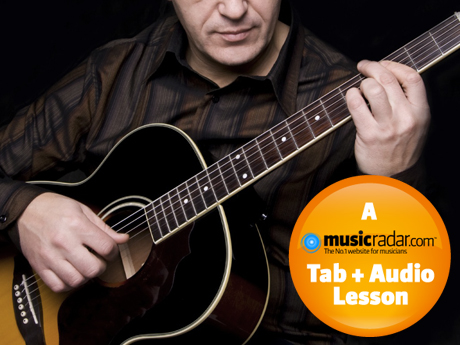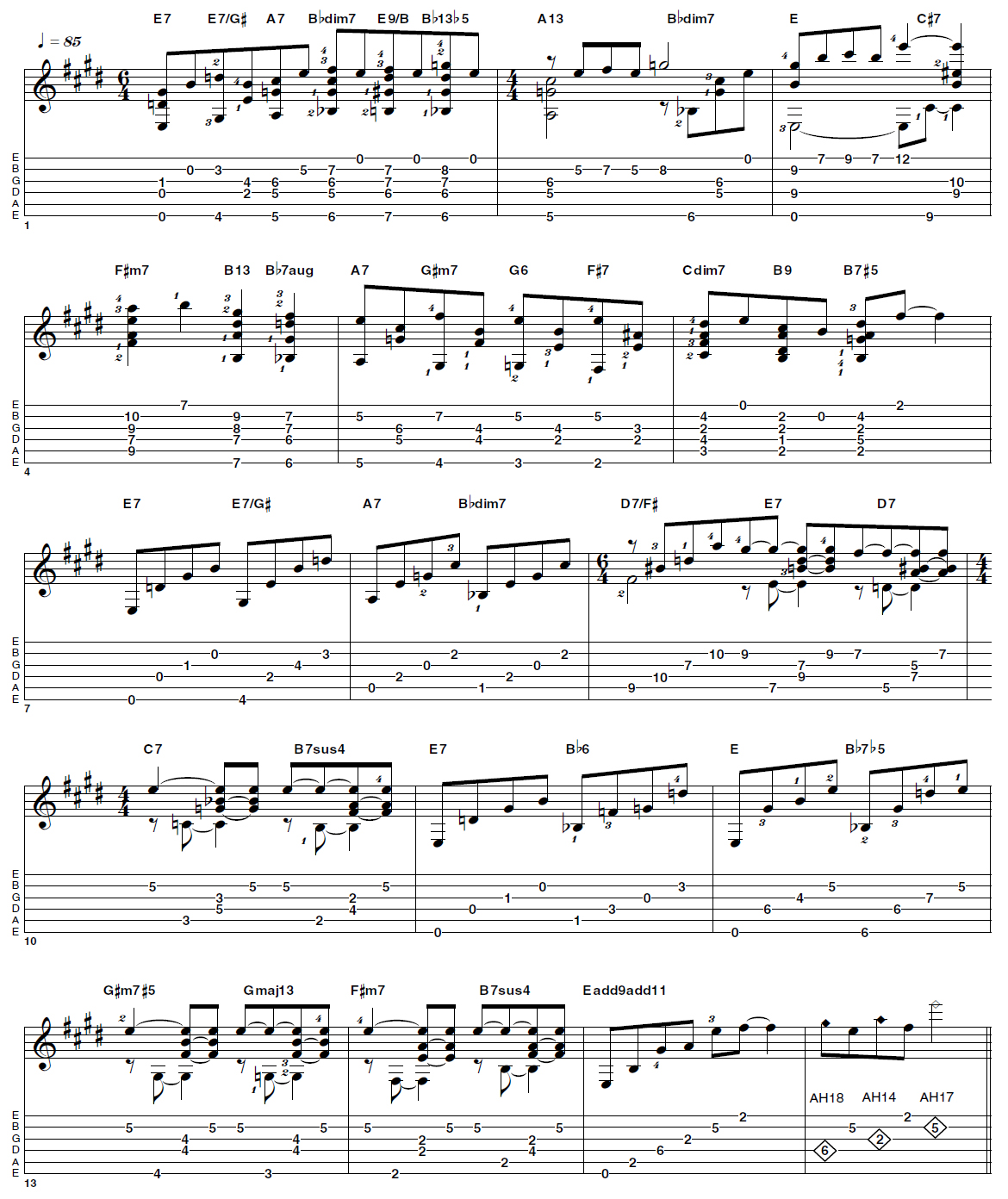How to play fingerstyle blues guitar: part 4

In this series of tab and audio lessons, Guitar Techniques magazine's Stuart Ryan takes you through a gigantic acoustic method for playing fingerstyle blues. This is part four of the series - check out lesson number one here.
Part 4: Jazz-blues
Blues is an intrinsic part of jazz and undoubtedly led on to that music. The harmony is far more sophisticated and we'll give you pointers where applicable. The bars of 6/4 are there as we've added a few chords - check out any Robert Johnson tune and you will see bars of different lengths as he added what he felt!
Audio
Tab

(Click tab to enlarge)
[Bar 1] There is a great deal of harmonic movement here. Some of these chords are just inversions. Watch out for some tough stretches as well!
[Bar 2] Some of the chords are sustained whilst lead lines are played on top. Listen to Martin Taylor and Joe Pass for this multi-guitar effect.
[Bar 7] A gospel style turnaround using inversions to move between the chords. In bar 9, the D7/F# is a nice way of getting smoothly to the E7, which then descends through D7 and C7 before getting to the V chord (B7sus).
[Bar 11] There's a tritone substitution here (Bb7 is the tritone sub of E7).
[Bar 12] Note how the next series of chord is linked via a 'common tone', in this case the E played on the second string.
Get the MusicRadar Newsletter
Want all the hottest music and gear news, reviews, deals, features and more, direct to your inbox? Sign up here.
[Bar 15] A great big chord to finish with and a Martin Taylor/Chet Atkins harping sequence to close. Phew, that's enough to give anyone the blues!









